Evidences for the Book of Mormon
Occasionally I have conversations with skeptics who ask, “What evidence do you have that the Book of Mormon is really true? How can this really be another testament of Jesus Christ?”
Evidence that the Book of Mormon, while good to have, is not the essential thing that will convert mankind to its truthfulness, or to the person the Book of Mormon is bearing witness of: Jesus Christ as our Savior and Redeemer. All the wordprint studies, understanding of olive culture, or reading of chiasmus will not convert anyone to a life of following the Son of God. Only the Holy Ghost can do this. When we let the Holy Ghost into our hearts, God can work through us to experience a life we would not have known otherwise!
Do not underestimate the ability to articulate an argument
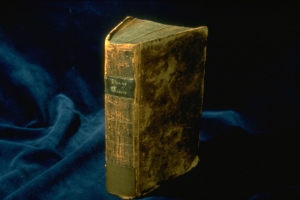 In praising C. S. Lewis, Austin Farrer wrote, “Though argument does not create conviction, lack of it destroys belief. What seems to be proved may not be embraced; but what no one shows the ability to defend is quickly abandoned. Rational argument does not create belief, but it maintains a climate in which belief may flourish.” 1
In praising C. S. Lewis, Austin Farrer wrote, “Though argument does not create conviction, lack of it destroys belief. What seems to be proved may not be embraced; but what no one shows the ability to defend is quickly abandoned. Rational argument does not create belief, but it maintains a climate in which belief may flourish.” 1
The most compelling evidence for the truthfulness of the Book of Mormon is spiritual. The Book of Mormon has several evidences within its pages that give evidence to it being exactly what Joseph Smith purported it to be: an ancient record written by the inhabitants of the Americas.
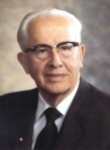 The April 1986 general conference, in which President Ezra Taft Benson was sustained as President of the Church, was a turning point for studying and applying the teachings of the Book of Mormon. Citing Doctrine and Covenants D&C 84:54–57, President Benson said that the Church had neglected its charter scripture and that “now, in our day, the Lord has revealed the need to reemphasize the Book of Mormon.” He blessed the Saints with “increased understanding” of the book.
The April 1986 general conference, in which President Ezra Taft Benson was sustained as President of the Church, was a turning point for studying and applying the teachings of the Book of Mormon. Citing Doctrine and Covenants D&C 84:54–57, President Benson said that the Church had neglected its charter scripture and that “now, in our day, the Lord has revealed the need to reemphasize the Book of Mormon.” He blessed the Saints with “increased understanding” of the book.
I believe that in the last 25 years there has been an increased understanding of the Book of Mormon as an ancient text. Evidence has come to light which supports the claims made by the authors of the text.
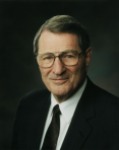 Evidence also makes the truth plain and plausible. In 1976 Elder Maxwell predicted: “There will be a convergence of discoveries (never enough, mind you, to remove the need for faith) to make plain and plausible what the modern prophets have been saying all along.” I believe that this prophecy has been amply fulfilled in the last thirty five years. Literally hundreds of newly discovered insights converge on the same supporting conclusion. Certain things that might at first have appeared outrageous, on closer inspection have turned out to be right on target. The ancient Jaredite transoceanic migration that lasted 344 days (see Ether 6:11) ceases to seem so fantastic when that turns out to be exactly the length of time it takes the Pacific current to go from Asia to Mexico. The oddity of Nephi’s making new arrows when only his bow had broken suddenly becomes plausible when one realizes that arrows and bows must match each other in weight, length, and stiffness,again making “plain and plausible” what the Book of Mormon has said all along. 2
Evidence also makes the truth plain and plausible. In 1976 Elder Maxwell predicted: “There will be a convergence of discoveries (never enough, mind you, to remove the need for faith) to make plain and plausible what the modern prophets have been saying all along.” I believe that this prophecy has been amply fulfilled in the last thirty five years. Literally hundreds of newly discovered insights converge on the same supporting conclusion. Certain things that might at first have appeared outrageous, on closer inspection have turned out to be right on target. The ancient Jaredite transoceanic migration that lasted 344 days (see Ether 6:11) ceases to seem so fantastic when that turns out to be exactly the length of time it takes the Pacific current to go from Asia to Mexico. The oddity of Nephi’s making new arrows when only his bow had broken suddenly becomes plausible when one realizes that arrows and bows must match each other in weight, length, and stiffness,again making “plain and plausible” what the Book of Mormon has said all along. 2
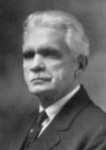 Elder B. H. Roberts wrote in 1909: “The power of the Holy Ghost . . . must ever be the chief source of evidence for the truth of the Book of Mormon. All other evidence is secondary. . . . No arrangement of evidence, however skillfully ordered; no argument, however adroitly made, can ever take its place.” It would certainly be an abuse to supplant testimony and faith with evidence, or with anything else, but scrutinizing evidence can help. Elder Roberts continued: “Indeed, the careful presentation of evidence clarifies the truth and enhances the power of testimony. Elder Roberts concluded: “To be known, the truth must be stated and the clearer and more complete the statement is, the better opportunity will the Holy Spirit have for testifying to the souls of men that the work is true.” 3
Elder B. H. Roberts wrote in 1909: “The power of the Holy Ghost . . . must ever be the chief source of evidence for the truth of the Book of Mormon. All other evidence is secondary. . . . No arrangement of evidence, however skillfully ordered; no argument, however adroitly made, can ever take its place.” It would certainly be an abuse to supplant testimony and faith with evidence, or with anything else, but scrutinizing evidence can help. Elder Roberts continued: “Indeed, the careful presentation of evidence clarifies the truth and enhances the power of testimony. Elder Roberts concluded: “To be known, the truth must be stated and the clearer and more complete the statement is, the better opportunity will the Holy Spirit have for testifying to the souls of men that the work is true.” 3
The Plates, the Translation, and the Witnesses
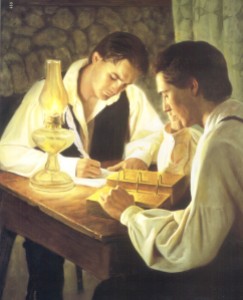 1. The Time Allowed: Joseph possessed the plates – 1827 to 1829. Joseph possessed the plates for a very short period of time. Even if he had the luxury of working on the translation every day during this time, the translation would be miraculous. Add to this the time when he did not have the plates, times when he was laboring and could not translate, and times when he did not have an adequate scribe, and we are left with Joseph Smith translating the Book of Mormon in a compressed time period covering about 8.5 pages per day!
1. The Time Allowed: Joseph possessed the plates – 1827 to 1829. Joseph possessed the plates for a very short period of time. Even if he had the luxury of working on the translation every day during this time, the translation would be miraculous. Add to this the time when he did not have the plates, times when he was laboring and could not translate, and times when he did not have an adequate scribe, and we are left with Joseph Smith translating the Book of Mormon in a compressed time period covering about 8.5 pages per day!
2. The Power of Witnesses: 11 other witnesses testified that they too had seen the plates. In any court of law, 11 independent witnesses testifying to the fact that they held the plates from which the Book of Mormon was translated has to be compelling. The fact that some of these individuals left the church yet never denied their testimony makes their testimony of the plates all the more compelling. Surely if they were participating in a fraud they would change their story once they left the church. This was not the case.
3. The History of Metal Plates: Writing religious texts on metal plates is now known to have occurred during the time of the Book of Mormon authors.
4. Wordprint Studies: Statistical analysis strongly indicates that neither Joseph Smith nor any of his known associates composed the English text of the Book of Mormon. In fact, research suggests that the book was written by numerous distinct authors. On Verifying Wordprint Studies
5. Hebrew Thoughts Written in Egyptian Text: Documents have been discovered in the 20th century that contain Bible passages (a Hebrew text) translated into Aramaic, yet written in demotic Egyptian characters. Jewish and Other Semitic Texts Written in Egyptian Characters
From Jerusalem to the New World
1. The name of Lehi’s wife: Sariah, unknown prior to the publication of the Book of Mormon, has been found in ancient Jewish documents in Egypt at Elephantine, an island in upper Egypt where Jews lived during the same time as Lehi. Sariah in the Elephantine Papyri
2. Nephi’s Name: The name Nephi fits with the time and place – it has Egyptian roots; Nephi makes commentary on his understanding of the Egyptian language. Nephi’s name is not found in the Bible and was unique in the time of Joseph Smith. A Note on the Name Nephi
3. Lehi’s Travel Through Arabia: The Book of Mormon account of Lehi’s Arabian journey is remarkably accurate to numerous specific geographic conditions, but no scholar in the 19th century, let alone Joseph Smith, could have known of it.
An Old World Culture in a New World Setting
1. The Ancient Monetary System: In its smallest details, the Book of Mormon reveals its roots in the ancient Near East. For example, the system of monetary exchange set out in Alma 11:3–19 recalls ancient Babylonian economic legislation. The parallels are striking.
In order for ancient economies to work effectively, kings had to spell out the value of various commodities and establish exchange rates – especially between consumable goods and precious metals. Thus, the laws of Eshnunna were established in the early 18th century BC. These laws were not discovered until the 1950’s.
There are several parallels between the Babylonian system and the Nephite system of rates of exchange.
A) The legal form of the two systems is consistent. The standard phrasing “1 Kor of barley is (priced) at 1 shekel of silver” resembles that in the Book of Mormon where a senum of silver and a senine of gold were converted into grain values.
B) The primary conversion in Babylon was between barley and silver. Nine other Babylonian provisions converted various additional commodities into silver values, followed by three more provisions that converted others into measure of barley. Thus, precious metal and grain measures were convertible into each other. The law of Mosiah featured precisely the same conversion capability: the basic measure for either gold or silver was equated with “a measure of barley” (Alma 11:17).
C) In Babylonia the basic commodity valuation system allowed traders to deal in a variety of items, all convertible into silver or barley. Similarly, Mosiah’s system converted transactions from silver into “a measure of every kind of grain” (Alma 11:17).
D) Both economic systems were announced by kings to have been instituted for similar reasons. The laws of Eshnunna began with a royal superscription that proclaimed this standardization as instrumental in establishing justice, eliminated enmity, and protecting the weak. Likewise, King Mosiah enacted his laws expressly to establish peace and equality in the land (see Mosiah 29:38,40). 4
Though mentioned in passing, this explanation of the monetary system in the Book of Mormon drives home the impossibility of faking an entire economic system in a text you are attempting to pass off as authentic. To have this system match an ancient system in such detail would be impossible for the prophet Joseph Smith or any author of his day. Weighing and Measuring in the Worlds of the Book of Mormon
It is also worthy to note that coins were not invented until after Lehi left Jerusalem. Occasionally we draw fire from critics stating that the Book of Mormon mentions the use of coins, but this is not supported in the text. The chapter heading to Alma 11 mentioning coinage was added much later, after the Book of Mormon was translated by the prophet Joseph Smith. The actual text mentions weights – precious metals were used as an exchange.
The text does not mention the metal being stamped or minted, which is what makes a coin. As far as we know, people in ancient America did not use coins. The Bible mentions weights being used by the people of ancient Israel, the most common of which was the shekel, which literally means “to weigh”. Lehi left just before the evolution of coinage in the ancient world, where in Anatolia, which is modern Turkey, the first coins were developed. The remains from this area show a combination of stamped metals with precious metals that were not stamped, indicating that perhaps there was an evolution of sorts in the acceptance of coins as a standard of currency.
It is reasonable to suppose that if Joseph Smith were fabricating the Book of Mormon, that he would include a monetary system that would resemble something he was familiar with. Not only does this not happen, but he shows us a system of exchange right out of the ancient world that correlates with the evidence we now have. This passing mention of a monetary system in the Book of Mormon is another powerful evidence of it being an ancient work.
 2. Military Oaths: The oath of allegiance taken by Nephite soldiers in Alma 46:21–22 is almost identical in form to military oaths among ancient Israelite and Hittite warriors. Can you imagine Joseph Smith, making up the Book of Mormon in his head thinking, “I know! I will put a story in the book where a bunch of warriors swear allegiance to the principles of their military leader by ripping off their shirts! An Oath of Allegiance in the Book of Mormon
2. Military Oaths: The oath of allegiance taken by Nephite soldiers in Alma 46:21–22 is almost identical in form to military oaths among ancient Israelite and Hittite warriors. Can you imagine Joseph Smith, making up the Book of Mormon in his head thinking, “I know! I will put a story in the book where a bunch of warriors swear allegiance to the principles of their military leader by ripping off their shirts! An Oath of Allegiance in the Book of Mormon
3. Ancient Curses: And the curse of speechlessness placed upon Korihor in Alma 30:49 finds striking ancient parallels. Cursing a Litigant with Speechlessness
 4. Ancient Ties in King Benjamin’s Speech: King Benjamin’s classic address in Mosiah 2–5 occupies roughly 11 pages in the current English edition, which means that Joseph Smith may have dictated this doctrinally rich text of nearly 5,000 words in a little more than one day. Critics of the Book of Mormon who claim that the text is not Jewish enough have not understood the parallels between King Benjamin’s address and the Feast of Tabernacles. Recent research shows that the sermon is intimately linked with the ancient Israelite Sukkot (Sue-kah), or Feast of Tabernacles and the Day of Atonement, as well as with archaic treaty and covenant formulas and early Near Eastern coronation festivals. Even the physical setting of the speech—delivered while the king stood upon a tower (see Mosiah 2:7)—is ritually appropriate to the occasion. But the Prophet Joseph Smith could not have learned this from the English Bibles or any other books available to him. King Benjamin and the Feast of Tabernacles
4. Ancient Ties in King Benjamin’s Speech: King Benjamin’s classic address in Mosiah 2–5 occupies roughly 11 pages in the current English edition, which means that Joseph Smith may have dictated this doctrinally rich text of nearly 5,000 words in a little more than one day. Critics of the Book of Mormon who claim that the text is not Jewish enough have not understood the parallels between King Benjamin’s address and the Feast of Tabernacles. Recent research shows that the sermon is intimately linked with the ancient Israelite Sukkot (Sue-kah), or Feast of Tabernacles and the Day of Atonement, as well as with archaic treaty and covenant formulas and early Near Eastern coronation festivals. Even the physical setting of the speech—delivered while the king stood upon a tower (see Mosiah 2:7)—is ritually appropriate to the occasion. But the Prophet Joseph Smith could not have learned this from the English Bibles or any other books available to him. King Benjamin and the Feast of Tabernacles
5. Moshia – Joseph Smith could not have known that the ancient Hebrew term moshia’ signifies a champion of justice against oppression, appointed by God, whose mission it is to liberate a chosen people from oppression, especially by nonviolent means. The term does not occur in the English of the King James Bible. But such nonviolent deliverance is a major theme of the book of Mosiah!
Interestingly, the term môšia applies perfectly to the Mosiahs in the Book of Mormon. King Mosiah I was a God-appointed hero who delivered the chosen people of Nephi from serious wars and contentions by leading them in an escape from the land of Nephi (see Omni 1:12-14). It is unknown whether he was called Mosiah before he functioned as a môšiac of his people or whether he gained this well-earned title afterward, perhaps as a royal title, but either is possible.

Indeed, the themes of God’s salvation and the deliverance of his people are strong in the book of Mosiah. It tells of one môšia after another. Abinadi was a non-violent deliverer whose words made it possible for the people to be delivered from their spiritual blindness. Although Abinadi was martyred, his words and example led to the people’s deliverance. Alma was a God-inspired môšia who peaceably saved his people from king Noah and the Lamanites. Zeniff tried to return to the land of Nephi to repossess the rightful property of the Nephites. His efforts failed, however, and his grandson Limhi eventually functioned as a môšia by leading his people in their escape back to Zarahemla. At the end of the book of Mosiah, the reign of judges was established, a fitting development for a people that had been well served by môšicim for over a century. Thus, the book of Mosiah, like the book of Judges in the Old Testament, appears to have been meaningfully named. What Was a Mosiah?
6. Chiasmus
The Book of Mormon is filled with chiastic structures. My favorite is the 36th chapter of Alma, a perfect chiastic structure in theme and in very word. This form of Hebrew writing is a slam dunk in forcing the honest inquirer to answer the question, “from where does this book come from?” Certainly this is not a 19th century document. Chiasmus in the Book of Mormon lead us to conclude that the authors of the text were skilled in this ancient writing technique. John Welch stated:

“There exists no chance that Joseph Smith could have learned of this style [chiasmus] through academic channels. No one in America, let alone in western New York, fully understood chiasmus in 1829. Joseph Smith had been dead ten full years before John Forbes’ book was published in Scotland. Even the prominent scholars today (1969)know little about chiasmic forms beyond its name and a few passages where it might be found. The possibility of Joseph Smith’s noticing the form accidentally is even more remote, since most biblical passages containing inverted word orders have been rearranged into natural word orders in the King James translation. And even had he known of the form, he would still have had the overwhelming task of writing original, artistic chiasmic sentences. Try writing a sonnet or multi-termed chiasm yourself: your appreciation of these forms will turn to awe. If the Book of Mormon then is found to contain true chiasmal forms, should it not be asserted without further qualification that the book is a product of ancient Hebrews culture?” 5
To see more examples of chiasmus in the Book of Mormon text, see:
The Outline of the Book of Mosiah is Chiastic
see also http://www.fairwiki.org/Chiasmus/Alma_36
see also: Anabasis and Catabasis in the Old Testament and The Book of Mormon
7. Names
Many such clues appear among the book’s place names. Jershon, for instance, designates a place that was given to the people of Anti-Nephi-Lehi as a “land … for an inheritance” (Alma 27:22). In Hebrew, Jershon means “a place of inheritance.”
Abinadi literally means “the messenger of the Father and the Son.” Ab (father)- Ben (son) Nadi (messenger). When reading his message, we come to the conclusion that his name fits his message.
Nahom= to mourn, lament or to be sorry; Joseph Smith simply would not have known this in the late 1820s.
Alma– The appearance of the two men named Alma in the Book of Mormon has occasioned much comment from critics. They observe that Alma is a woman’s name and Latin rather than Hebrew. (Many recognize the phrase alma mater, which means “beneficent mother” and refers to the school from which someone has graduated.) They are correct, of course. If Joseph Smith knew the name Alma at all in the early 19th century, he would have known it as a woman’s name in Latin. Recently acquired evidence demonstrate that Alma also occurs as a Semitic masculine personal name in the ancient Near East—just as it does in the Book of Mormon.
8. Receiving a throne name
In many ancient societies a king received a new name or throne name when he was crowned king. Several Israelite kings had two names, a birth name and a throne name. It may be that all the kings of Judah received a new name when they came to the throne. During the Middle Kingdom (2000-1800 BC), each king of Egypt had no fewer than five names and received a throne name at the time he became king. Kings in Mesopatamia also received a new name. Each Parthian king (in ancient Iran) assumed the same throne name. Arsak, at his crowning, an act that has made it hard for historians to distinguish one ruler from another.
Similarly, use of a single royal title marked the early Nephite kings. Jacob wrote, “the people having loved Nephi exceedingly… wherefore, the people were desirous to retain in remembrance his name. And whose should reign in his stead were called by the people, second Nephi, third Nephi, and so forth, according to the reigns of the kings; and thus they were called by the people, let them be of whatever name they would” (Jacob 1:10-11).
 9. Olive Culture – The allegory of the olive tree in Jacob 5 shows a clear knowledge of olive cultivation far beyond what Joseph Smith, growing up in the American Northeast, could have possessed. But it is entirely consistent, in impressive detail, with what we learn from ancient manuals on olive cultivation.
9. Olive Culture – The allegory of the olive tree in Jacob 5 shows a clear knowledge of olive cultivation far beyond what Joseph Smith, growing up in the American Northeast, could have possessed. But it is entirely consistent, in impressive detail, with what we learn from ancient manuals on olive cultivation.
Summing Up
Persons who choose to dismiss the Book of Mormon must find their own ideas for explaining it and the mounting evidence for its authenticity. And while we will never “prove” the Book of Mormon true by using intellectual arguments or secular evidence, the trajectory of the evidence strongly suggests that it is exactly what it claims to be, a book worthy of our deep study, reflection, and serious personal prayer. Thousands of hours of research have produced the current blossoming of Book of Mormon studies that bless the lives of Latter-day Saints. They cannot be lightly brushed aside.
The power in Alma’s testimony is that not only can he say that he knows, but he says “let me tell you how I know”. I like Alma’s confrontation with Korihor in Alma 30.
In Alma 30:40 Alma tells Korihor that he cannot prove that God does not exist. I can almost see Korihor stomping his feet in response saying, “wait a second – that’s my line! You can’t take away my argument!”
Does Korihor (or anyone for that matter) have proof that God doesn’t exist!? No! There is NO EVIDENCE that there is NO GOD. The same argument can be applied to the Book of Mormon. It cannot be disproved. People have tried, but work as they may, it will be impossible to disprove the facts put forth by Joseph Smith. Along these lines, the evidence put forth in this paper cannot in and of themselves “prove” that the Book of Mormon is true. Only the testimony born by the Spirit can do this. But the evidence put forth can foster a climate whereby belief can flourish. This environment is needed by some to take the initial steps of faith necessary to experiment on the words contained in the Book of Mormon.
A Practical application
What are we to do?
What can we as parents and teachers do?
Joseph Smith, in the Lectures on Faith, spoke concerning how faith in the Lord was obtained by men like Abraham. How did Adam and the early saints instill faith in the hearts of those who followed them? He said:
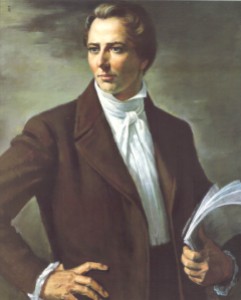 We have now clearly set forth how it is, and how it was, that God became an object of faith for rational beings; and also, upon what foundation the testimony was based, which excited the enquiry and diligent search of the ancient saints, to seek after and obtain a knowledge of the glory of God: and we have seen that it was human testimony, and human testimony only, that excited this enquiry, in the first instance in their minds–it was the credence they gave to the testimony of their fathers—this testimony having aroused their minds to enquire after the knowledge of God, the enquiry frequently terminated, indeed, always terminated, when rightly pursued, in the most glorious discoveries, and eternal certainty. 6
We have now clearly set forth how it is, and how it was, that God became an object of faith for rational beings; and also, upon what foundation the testimony was based, which excited the enquiry and diligent search of the ancient saints, to seek after and obtain a knowledge of the glory of God: and we have seen that it was human testimony, and human testimony only, that excited this enquiry, in the first instance in their minds–it was the credence they gave to the testimony of their fathers—this testimony having aroused their minds to enquire after the knowledge of God, the enquiry frequently terminated, indeed, always terminated, when rightly pursued, in the most glorious discoveries, and eternal certainty. 6
That is what I can do as a father, as a teacher – bear testimony of the truth that I know so that my children will have their minds aroused to enquire after God, making glorious discoveries and eternal certainty. I need to stir up their faith to feel after God, and what is the greatest catalyst to stir up faith? It is testimony.
This in large measure is one of the greatest gifts I can give to my students and children.
Notes
1. Austin Farrer, “Grete Clerk,” in Light on C. S. Lewis, comp. Jocelyn Gibb (New York: Harcourt and Brace, 1965), 26.
2. The Power of Evidence in the Nurturing of Faith from Echoes and Evidences of the Book of Mormon by John Welch pp. 17–53.
3. Roberts, New Witnesses for God, 2:vii.
4. Parry, Peterson, and Welch, Echoes and Evidences of the Book of Mormon, p. 349.
5. John Welch, BYU Studies , Vol. 10, No. 1, p.75. See also: What Does Chiasmus in the Book of Mormon Prove? Hugh Pinnock wrote an article entitled “Forms of Parallelism” which illustrates more examples than I have demonstrated on this post.
6. Joseph Smith, Lectures on Faith 2:56.

Reblogged this on LDS Scripture Teachings and commented:
I wanted to repost this as I am teaching Alma’s confrontation with Korihor. There is evidence that substantiates the claims of the Book of Mormon. While secular evidence will never prove the Book of Mormon to be true, it certainly will give us pause. Rational argument does not create belief, but it maintains a climate in which belief may flourish.